Elephants, racing cars and more: how to make 13 weird noises with your guitar
Coax 13 crazy sounds from your axe

Introduction
In the grand scheme of things, the electric guitar remains a relatively new instrument, and players are still finding new sounds every day - some are usable, some not so usable, but either way, they're sure to impress your friends, guitar-playing or otherwise.
Over the following pages, we share 13 of our favourite sonic tips and tricks to emulate animals, technology and other instruments to boot. Strap in, because it's going to be one weird ride…

1. Make your guitar sound like a humpback whale
Emulating the haunting song of a frisky humpback whale is a great way to add an ethereal texture to your music.
To reproduce this beautiful and mysterious sound on your guitar you will ideally need a whammy bar and a delay pedal. The whammy bar will allow you to create the smooth, gradual pitch bends, which drive female humpbacks crazy.
Create the aquatic echo by setting the delay pedal to around 600ms, which repeats everything you play at a 100pbm tempo. Around five or six repeats seems to give the right illusion of distance.
Step 1
Check that your delay pedal settings are sufficiently cetacean and start with your guitar volume turned all the way down. Play a 12th fret harmonic on either the 2nd, 3rd or 4th strings, as these strings seem to be closest to our flippered friends’ frequency range.
Step 2
Use your fretting hand to push the whammy bar down slightly and hold the volume knob, but don’t turn it yet! Slowly let the whammy bar return to normal position and simultaneously turn up your guitar volume. Continue to move the bar up and down.
Step 3
Turn the volume back down gradually and repeat the whole process, this time using a different string. It won’t dampen the ardour of any lady humpbacks if you let this note overlap the previous one.

2. Make your guitar sound like a racing car
For this F1-style jam session, all you need is a fierce, biting distortion tone and a slide.
We’re playing a simple two-note chord, initially on the third and fourth strings, then the fifth and sixth. Join in, and you too can make your guitar sound like Alonso’s Ferrari!
Step 1
Dial in a distorted tone with plenty of treble and gain, and select your bridge pickup. Place your slide on whichever finger is most comfortable. The slide is just the job for creating the smooth pitch change of an accelerating F1 engine.
Step 2
Play a slow two-note sliding chord from the 19th fret to the 21st on the third and fourth strings. A rapid shift back to the 19th fret should sound like you are changing up through the gears. This effect sounds best when played with no fixed rhythm.
Step 3
Next up on the track, we hit the chicane – and it’s time for some ‘downshift’ gear changes. This sound is made by playing another two-note chord on the 21st fret of the fifth and sixth strings, then sliding quickly down to around the 15th fret.

3. Make your guitar sound like a whinnying horse
Take the reins, saddle up your vibrato arms and get ready to harness some harmonics and produce a thoroughbred whinnying horse sound. This effect has been used by the likes of Steve Vai, Dimebag Darrell and Mattias IA Eklundh.
The 3rd-fret harmonic can be tricky, so home in on finer elements of the technique, such as working out the best hand position and which part of your finger makes contact with the string.
Practise the steps one at a time before playing them together in one smooth motion… and they’re off!
Step 1
Place your thumb over the top of the fretboard and mute the fourth, fifth and sixth strings. Rest your first finger on the first and second strings: keep them muted. This leaves the third string open.
Step 2
Pick the third string using a fret hand pull-off, then push your whammy bar down as far as possible to slacken the strings. Bring the bar back to a resting position, and touch the string above the 3rd fret to produce a clear harmonic.
Step 3
As the harmonic is ringing, pull the bar up as high as possible and then gradually bring it down as far as possible. At the same time, wobble your hand so the pitch goes up and down in small increments on the way.
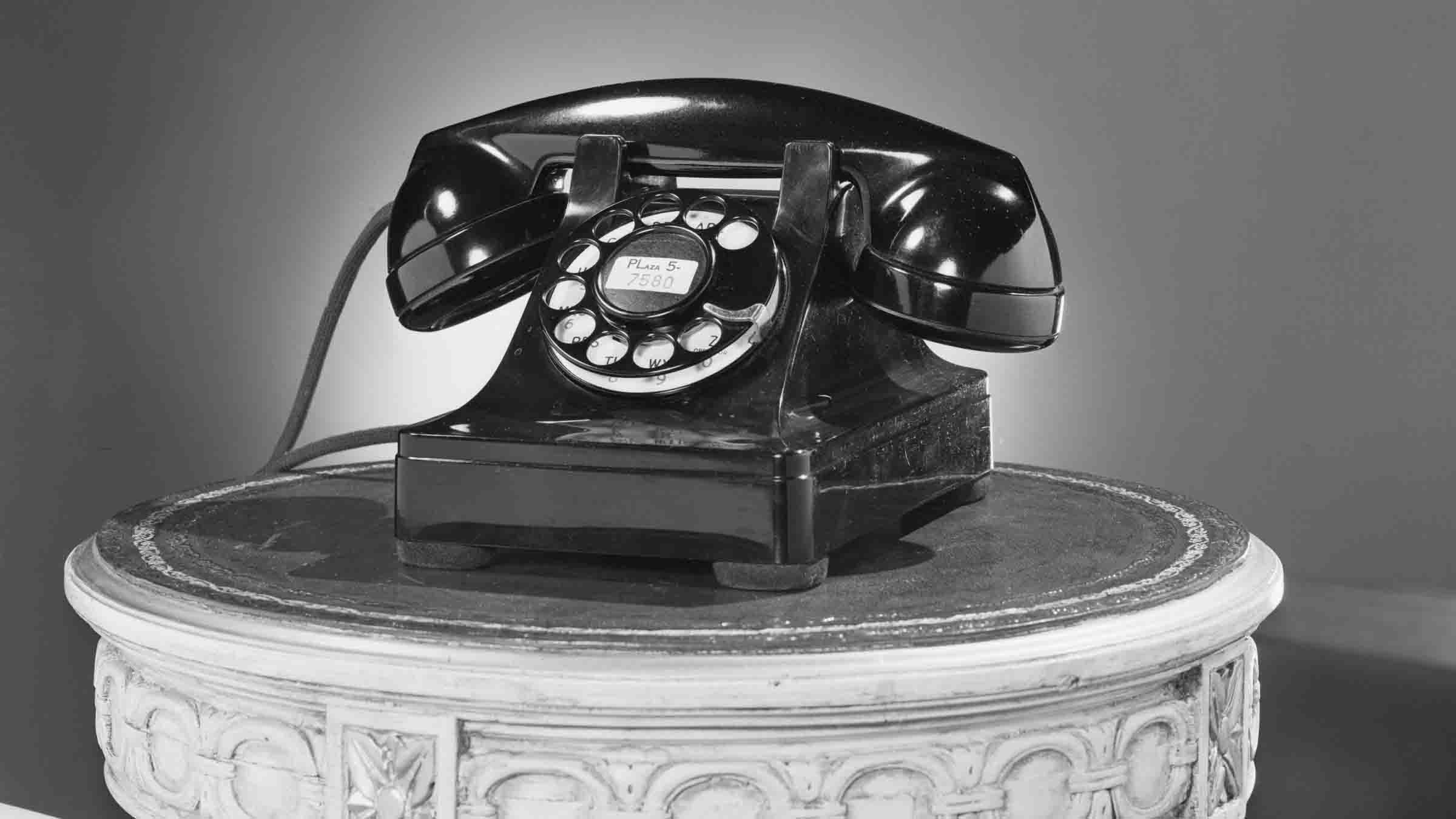
4. Make your guitar sound like a ringing telephone
In these days of vibrating mobiles and ringtones that play your favourite songs, the simple sound of a ringing telephone is becoming rare. However, as a guitar effect, it is definitely something to call home about.
Our technique uses an item you’ve probably got lying around, or even may be attached to your guitar right now: a whammy bar.
If you don’t have one, a metal pen or screwdriver will also do the trick. We’ll also be using the guitar as a kind of microphone, so use plenty of gain to enhance the effect.
Step 1
Place your guitar on your lap and use your first finger to play the 12th fret, first string. Mute the other strings with your remaining fingers. Detach your whammy bar and hold it like a xylophone beater. Drop the bar on to the first string and let it bounce back up.
Step 2
When the bar starts bouncing, increase the pressure slightly and you’ll find the bar will bounce repeatedly at high speed, creating a buzzing sound. In between buzzes, decrease the pressure of your fretting hand so that all the strings are muted. The idea is to have absolute silence between your ‘rings’.
Step 3
When you feel that it’s time to answer the phone, place your mouth close to the guitar pickup and speak. The higher the output of your pickups, the more effective this will be, but you can increase the volume by dialling in plenty of gain.

5. Make your guitar sound like a trumpeting elephant
Emulating the sounds of the world’s largest pachyderms is unlikely to appear at the top of your daily practice regime, but, as guitar sound effects go, the distinctive trumpet call of an elephant is a doozy. All you need is a guitar fitted with a whammy bar and a high-gain amp setting or distortion pedal to provide sustain.
The basic technique is to play two simultaneous natural harmonics a semitone apart before adjusting your guitar’s volume control and using a whammy bar for a gradual change in pitch and volume.
Follow these three steps and practise each movement slowly until it feels natural. Don’t worry, jumbo frets are not essential!
Step 1
Turn your guitar volume down before playing two natural harmonics; one at the 5th fret, third string, and one at the 7th fret, second string. These two notes are G and F#, and are a very dissonant-sounding semitone apart.
Step 2
While the two harmonics are sustaining, reach over to your whammy bar with your fret hand and place your pick hand on the volume knob. Quickly dip your whammy bar, pull it up as far as it will go and simultaneously turn the guitar volume up.
Step 3
Finish up by dipping the bar again and lowering the volume so that the sound tails off both in pitch and volume. This is vital. It’ll sound unnatural if you let the sound cut out dead.

6. Replicate Tom Morello's Cochise helicopter
This helicopter sound effect is much like the one devised by Tom Morello for the intro of Audioslave’s debut single, Cochise. All you need is your electric guitar, amp and a delay pedal.
Gently tap your guitar’s strings in time, keeping them muted so you get a good ‘chug’ sound. A bit of overdrive from your amp will help.
Set your delay pedal so it repeats only once in between each tap. The regular timing gives you the solid, mechanical rhythmic sound of rotor blades. Most important is that you keep steady timing, or your chopper effect just won’t fly.
Step 1
Set your delay pedal to repeat once, with a short time setting. For our video, we used a setting of 125ms, which is the same as an eighth of a second. You could also measure this as being a 32nd note played at 60bpm, or a 16th note at 120bpm.
Step 2
Use your fret hand to keep all six strings muted, then gently pat the strings with your outstretched picking hand fingers. Keep tapping the strings at the same speed as the delay effect so the ‘real’ sound and ‘echo’ alternate back and forth between each other.
Step 3
You can achieve a more realistic effect by varying the apparent location of your chopper. Tap gently over the bridge pickup for a distant low frequency sound, or slap the strings more energetically against the frets for more of an ‘overhead’ effect. Boost the bass on your amp to enhance the ‘attack’.
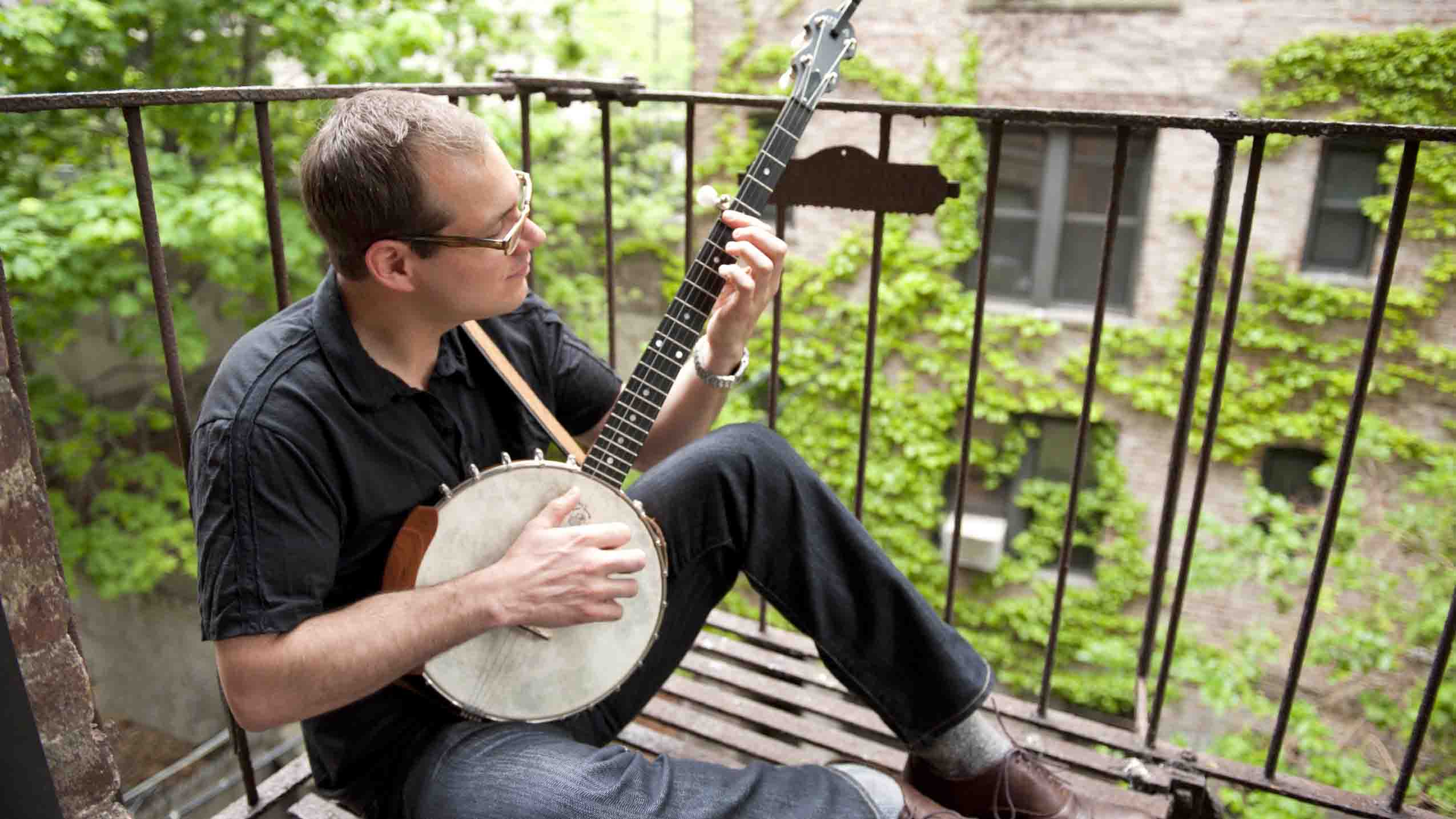
7. Make your guitar sound like a banjo
Banjos come in many varieties, including four-string, five-string and the less common six-string kind. And, in fact, it is surprisingly easy to give your own six-string a hillbilly bluegrass vibe, using just a piece of rolled up tissue paper and a simple altered tuning. The tissue paper is used to mute the strings; just stuff it under your guitar’s strings, near the bridge.
Tune your first string down a tone to D so that your top four strings form an open G tuning (DGBD). With the tuning sorted, tweak the tone on your amp as required. We used a twangy sounding bridge-position humbucker with the midrange boosted.
Step 1
Tune your guitar’s first string down a tone to D. If you play only the top four strings, this is an open G tuning (DGBD) – perfect for banjo.
Step 2
Roll up a paper towel or cloth and place it under the strings between the pickup and the bridge. The strings should still resonate, but with less sustain.
Step 3
Use your thumb and your first and second fingers to play the lick. Palm-muting will help you get even closer to the banjo sound. Our lick is tabbed below.


8. Make your guitar talk like Steve Vai
Guitar wizard Steve Vai has used his guitar to emulate the human voice throughout his career, first with Frank Zappa on tracks such as The Dangerous Kitchen and on solo album tracks such as So Happy, The Audience Is Listening and Ya-Yo Gakk.
Steve actually transcribed the notes and rhythms of human speech; the notes are usually a random series of semitones and even microtones, and the rhythms do not stick to a set tempo, which makes it quite a challenge to set to music.
Use fret-hand tapping to produce the notes, and employ your guitar’s whammy-bar for pitch bending, and a wah pedal to shape vowel sounds more realistically.
Step 1
Produce a random series of notes by hammering-on with your fretting hand; try to avoid playing a scale shape and go for unusual intervals such as b2nds, b5ths and b6ths. We’re using E and Bb notes on the fourth and fifth strings.
Step 2
Simultaneously use your whammy bar to ‘scoop’ in and ‘doop’ out of notes, as well as accessing micro-tones, which are tiny intervals ‘in-between’ standard semitones. These can only be played on the guitar by bending strings.
Step 3
Use a wah pedal to shape the tone and create the effect of a mouth opening and closing to create vowel sounds. ‘Toe down’ position is mouth fully open and ‘heel down’ position has a ‘closed mouth’ sound.
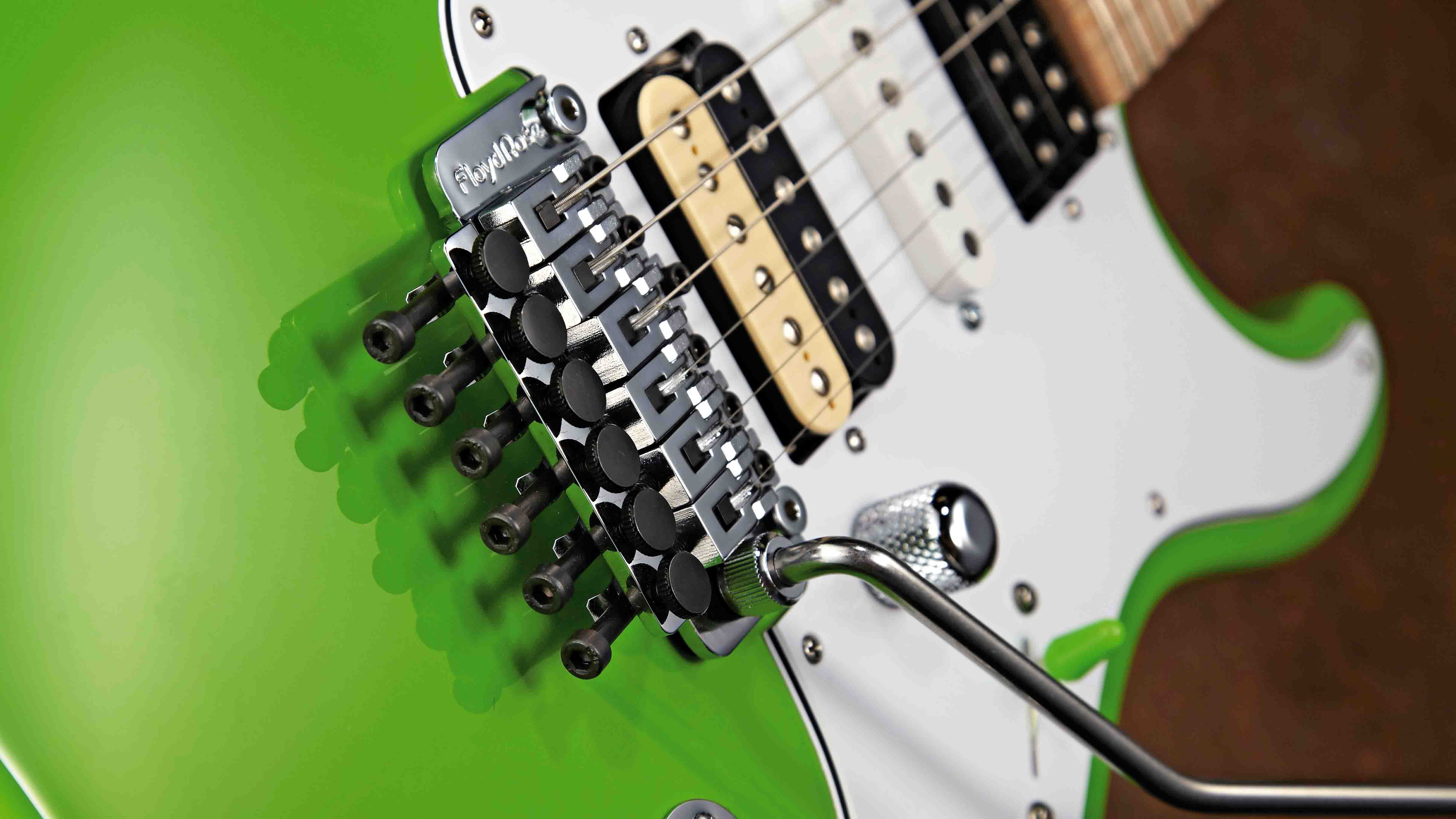
9. Gargle with your whammy bar
Whammy bar gargles can be performed on any guitar with a floating vibrato arm. Simply pick a note and firmly tap the bar so the bridge springs back to its resting position. The strings vibrate in sympathy with the springs to create the gargling effect. Tapping the bar can distract you from picking, so we recommend integrating gargles into legato licks to begin with.
It’s vital that your whammy bar slots or screws into its hole tightly. If your bar wobbles, a piece of tape wrapped around the end usually does the trick.
Step 1
Prepare your whammy bar by pointing it away from the neck of your guitar. For our lick, we’re playing a hammer-on and a pull-off between the 12th and 14th frets. Start by hammering on to the 14th fret with your third finger.
Step 2
Use your picking-hand thumb to push the bar back then quickly slip off the end of the bar so that it springs back to the resting position to generate the gargle effect. This should be a single quick movement.
Step 3
At this point in our lick, we play a pull-off to the 12th fret and then tap the whammy bar again to generate another gargle. The full lick is: 14th fret – gargle – 12th fret – gargle.
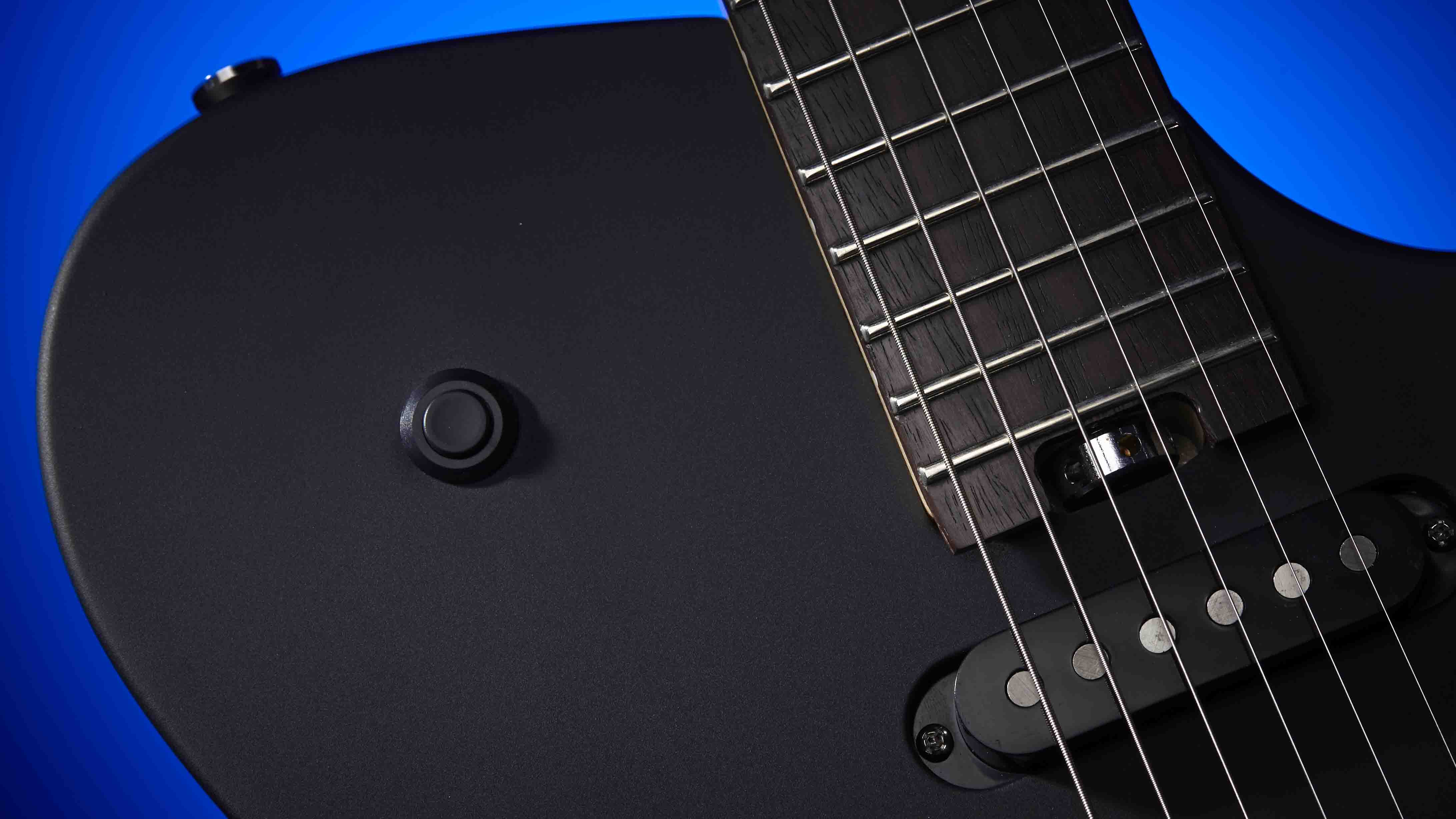
10. Kill switch in time
The kill switch effect has been employed by guitarists at the more experimental end of the spectrum, such as Ron ‘Bumblefoot’ Thal, Buckethead and, most famously, Tom Morello. The instant on/off sound is achieved by having either a toggle switch or a momentary push button that cuts the signal. This is a great way to create staccato, almost digital-sounding rhythms.
A kill switch is a relatively specialised addition to a guitar, but if you have a Les Paul-style guitar you can achieve the effect by rolling down the volume of one of the pickups and using the selector switch to toggle between them.
Step 1
Prepare by engaging your kill switch so that your guitar stays silent. Unfortunately, you can’t easily see the kill switch in our video, but we can assure you it is underneath the middle finger of TG contributor Charlie Griffiths’ pick hand.
Step 2
Our simple riff uses hammered-on two-note powerchords, mainly on the third and fourth strings. There’s no picking, so your pick hand is free to operate your kill switch. Resist the urge to play overly rhythmic fret-hand parts – most of the rhythm comes from using the kill switch.
Step 3
With your guitar silent and the first hammered-on chord ringing out, disengage the kill switch to allow the notes to be heard. Next, engage the kill switch to cut off the first chord. Practise kill switching one chord at first, then add other chords as you get a feel for the technique.
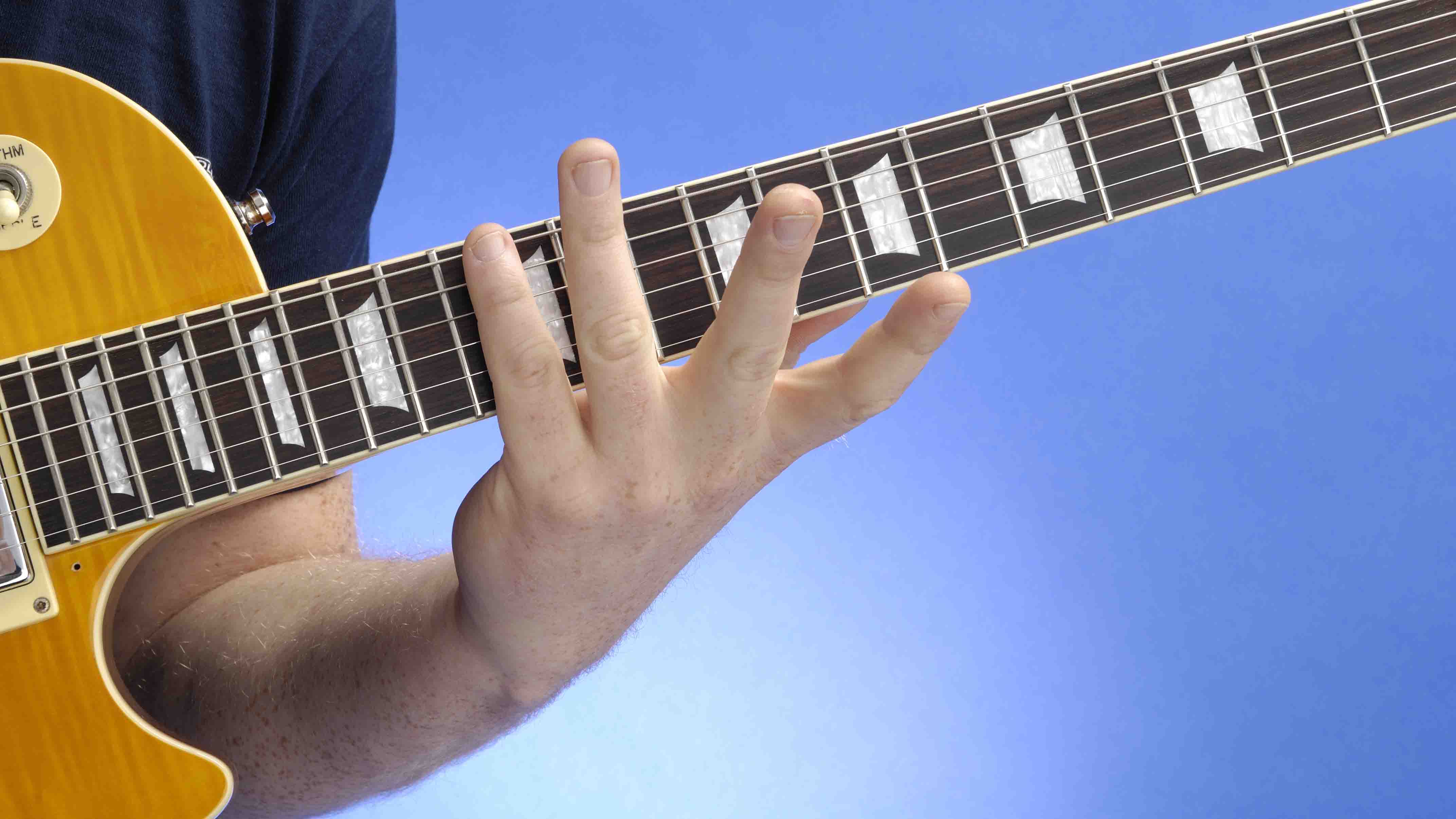
11. Utilise harp harmonics
This time, we're using the guitar to play notes in a cascading harp-style scale run. The guitar is a stringed instrument, so we are already halfway there, but to mimic the harp more closely we need to allow lots of notes to ring together at the same time.
When playing scales on the guitar in the usual fretted manner, we are limited by fingering options, so can often let only two or three notes ring together. By including open strings, it is possible to let six notes ring together simultaneously; you can use natural harmonics along the length of each open string to access different pitches and give a ringing bell-like quality.
Step 1
Use your first finger to play the harmonic at the 5th fret and let it ring. This pitch is G, which is two octaves higher than the open string.
Step 2
You can pluck the string using your pick, or you can use fingerstyle. Pick and fingers-style hybrid picking is also a good option here.
Step 3
Try to avoid touching the strings as you alternate between the 7th and 12th frets. Let as many notes as possible ring together.

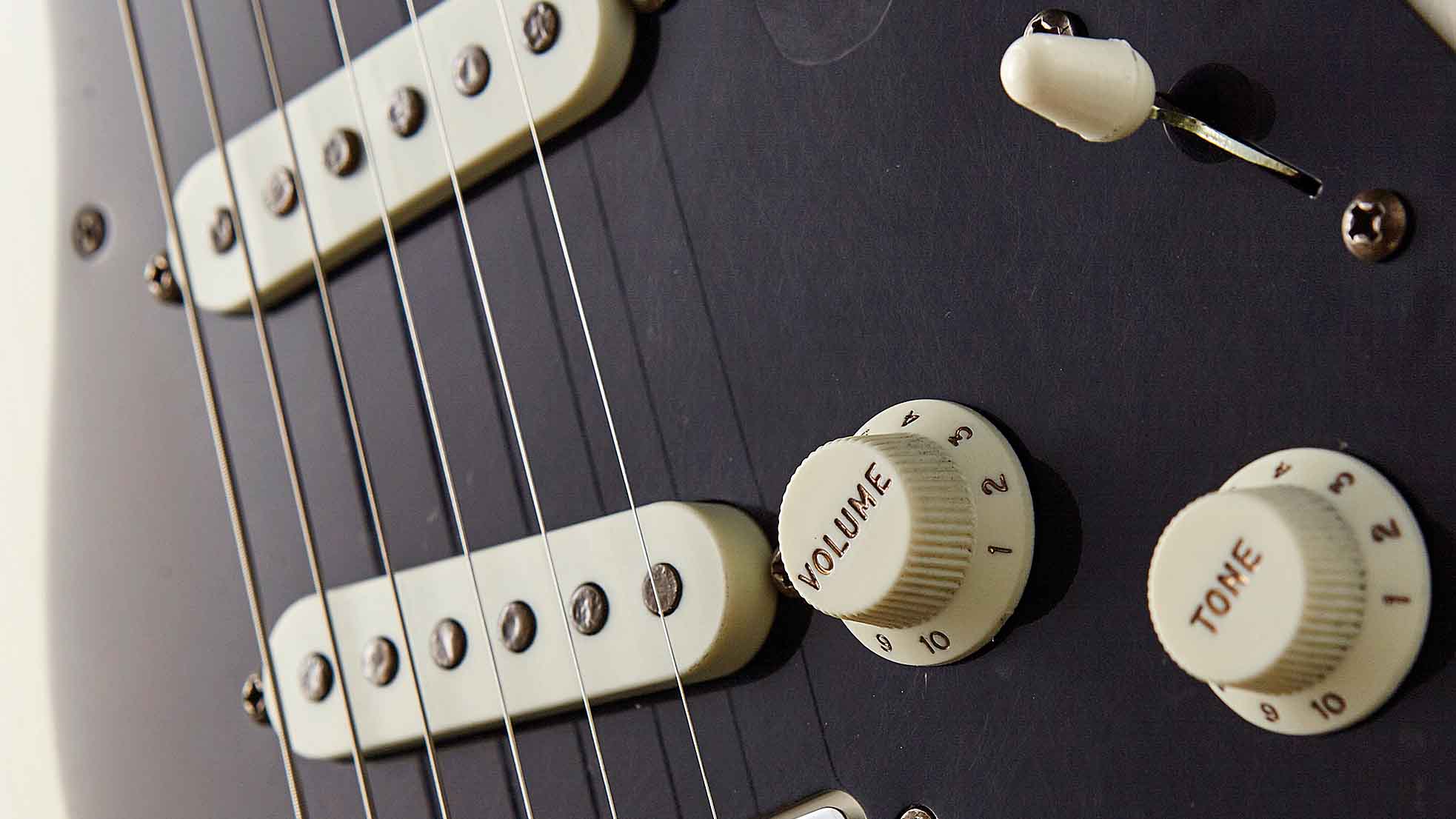
12. Create a tremolo effect without a pedal
Tremolo is a great way to add warmth and sparkle to a sustaining chord part. With its pulsating sound, the effect is reminiscent of a Hammond organ’s spinning Leslie speaker.
Guitar players have long mimicked this effect by using a tremolo pedal, but if you don’t possess one you can fake it by using your volume knob to adjust the level of your guitar.
The benefit of this ‘manual’ tremolo technique is that you can perform the effect at the same tempo as the part you are playing. Our example is at 120bpm and based on eighth notes, which is easily matched with the volume knob.
Step 1
Use all four fingers to hammer on the chord tones of the Cadd9 chord. Keep your fingers arched to allow the strings to sustain cleanly, but keep the idle strings muted with your first finger.
Step 2
With each hammer-on use your pick hand to raise and lower the volume to create a pulsating effect. Keep both of your hands synchronised so the hammer-ons and tremolo effect are in time.
Step 3
Repeat steps 1 and 2 for the following three chords, using the tip of your first fretting finger to mute the sixth string and the underside of the same finger to mute the first string.

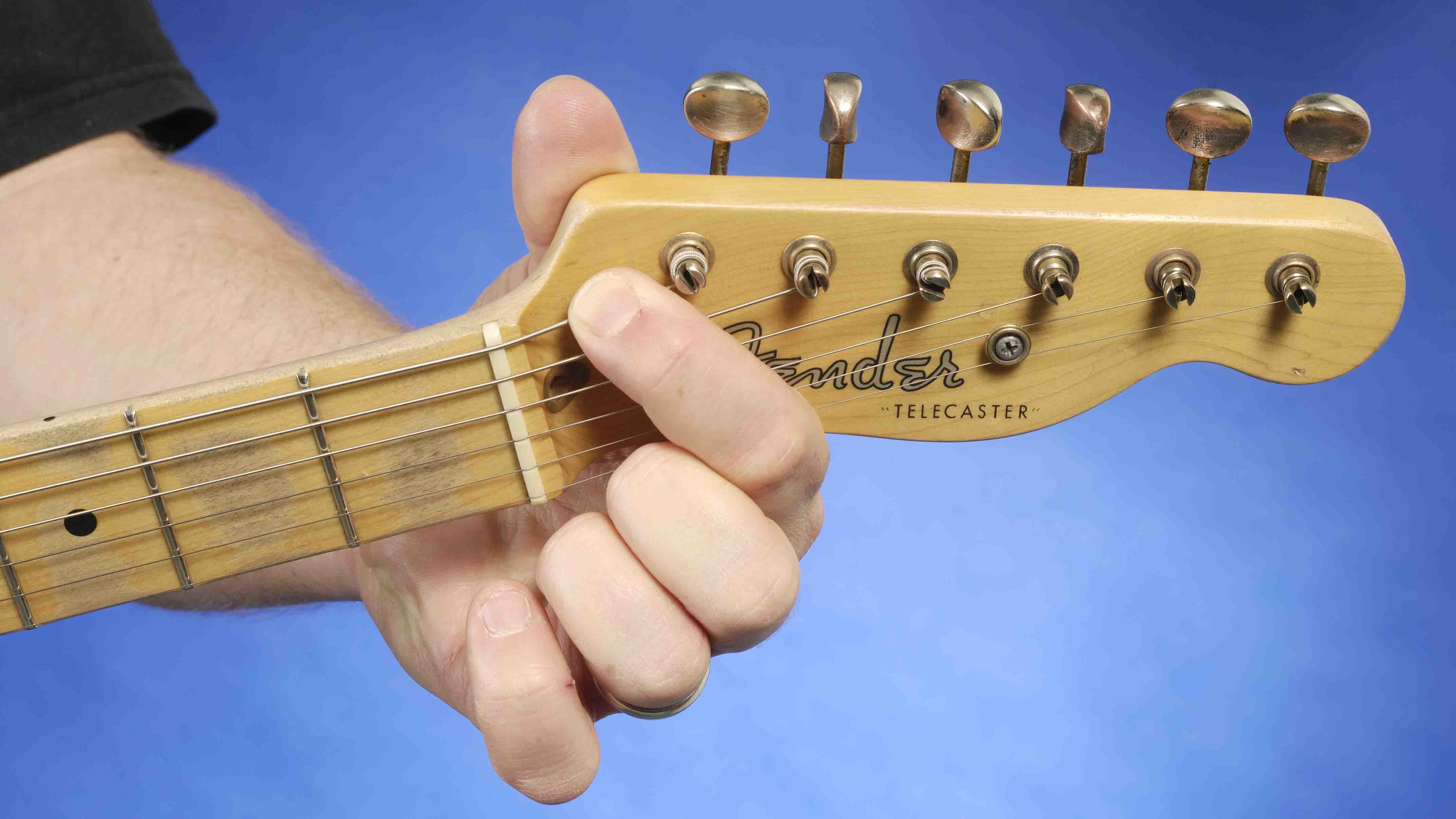
13. Emulate pedal steel guitars with behind-the-nut bends
Behind-the-nut string bends have long been used by country guitarists to emulate the sound of a pedal steel guitar. Jerry Donahue is a master of the technique and John 5’s country-fuelled Behind The Nut Love is a masterclass. In the rock world, Tony Iommi used the technique in the opening to Iron Man, as did Jimmy Page in his Heartbreaker solo.
The technique consists of using a fretting finger to press the strings down towards the headstock. Fender type guitars allow for wider bends, as they have a more recessed headstock than the flatter Gibson design. Bending the strings like this can be a painful business, so light-gauge strings such as 0.009s are recommended.
Step 1
Prepare your fretting hand by forming an E major chord shape with your second, third and fourth fingers, leaving your first finger free to reach across the nut to bend the strings.
Step 2
Pick the sixth, fourth then third strings and, as these notes ring out, press down on the third string behind the nut so the G# note rises to an A, before releasing back to G# again.
Step 3
Next, pick the open second string and use the same behind-the-nut technique, this time for a whole tone bend. Take care to execute the bend and release it steadily.

Total Guitar is Europe's best-selling guitar magazine.
Every month we feature interviews with the biggest names and hottest new acts in guitar land, plus Guest Lessons from the stars.
Finally, our Rocked & Rated section is the place to go for reviews, round-ups and help setting up your guitars and gear.
Subscribe: http://bit.ly/totalguitar


